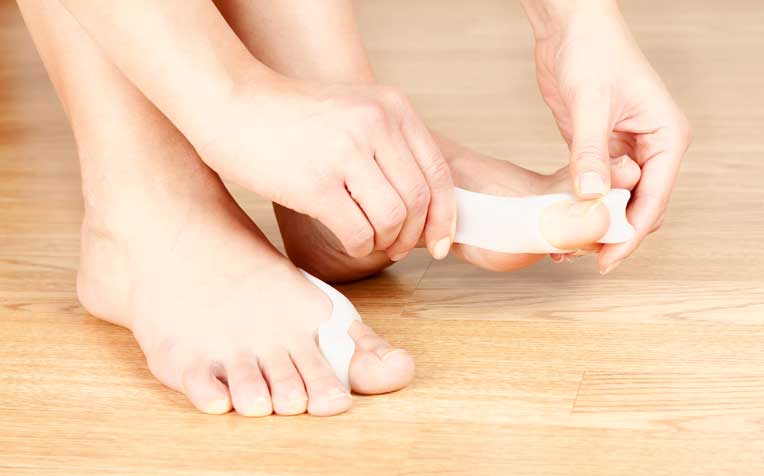HealthXchange will NEVER ask you to transfer money over a call. If in doubt, call the 24/7 ScamShield helpline at 1799, or visit the ScamShield website at www.scamshield.gov.sg.
Foot Bunion: Who Gets It and Why?

Silicone bunion shields can help relieve big toe joint pain.
The Podiatry Department at Singapore General Hospital (SGH), a member of the SingHealth group, shares what are the common causes of bunions and what can be done to manage the condition.
A bunion, or hallux valgus, is a foot deformity involving the bone and joint of the big toe. The big toe drifts towards the second toe, and the two toes may even overlap. The bone of the big toe protrudes due to worsening joint misalignment, making the forefoot appear wider.
The bunion won’t go away on its own; it can only worsen with age. A mild bunion may not be painful initially, but it can eventually lead to big toe joint pain and difficulty with shoe fit.
What causes bunions?
People of all ages, ethnicities, and fitness levels can get bunions. However, it is more commonly found in women and in older individuals. Bunions are acquired deformities, but can also run in families.
Bunion sufferers can be divided into two broad categories. One is people with bunions caused by another medical condition such as gout, rheumatoid arthritis, or neuromuscular disease. The other is people with bunions caused by poor foot function, such as collapsed arches or flat feet. This latter group of people is often otherwise healthy and active.
Prolonged wearing of ill-fitting shoes, such as shoes with a narrow, pointed toe box, does not cause bunions per se, but it does increase the risk of developing a bunion in individuals already prone to them.
What can I do for my bunion?
If bunions are noticed and correctly treated early, such as during childhood, the deformity can be slowed or stopped. Preventative bunion care includes footwear with a supportive instep and roomy toebox, possibly with the addition of orthotic shoe inserts. Avoid regular use of tight-fitting shoes, especially high-heel and narrow-toed shoes. Also, avoid activities which require improper shoe fit and toe pressure, such as ballet. In short, preventative care often calls for a lifestyle change where one’s feet are concerned.
Palliative self-treatment includes rest, cold pack application, and use of silicone bunion shields available at orthopaedic shoe stores or large retail pharmacies. These can relieve bunion pain, but will not correct the underlying problem.
For an adult who already has a bunion, use of wide-toebox supportive shoes will not reverse the deformity. However, it can help relieve irritation and pain arising from the bunion.
Also, check out our article on bunion keyhole surgery.
Ref: R14
Contributed by
Related Articles
Public Events
Get the Health Buddy App
© 2025 SingHealth Group. All Rights Reserved.

















 Get it on Google Play
Get it on Google Play